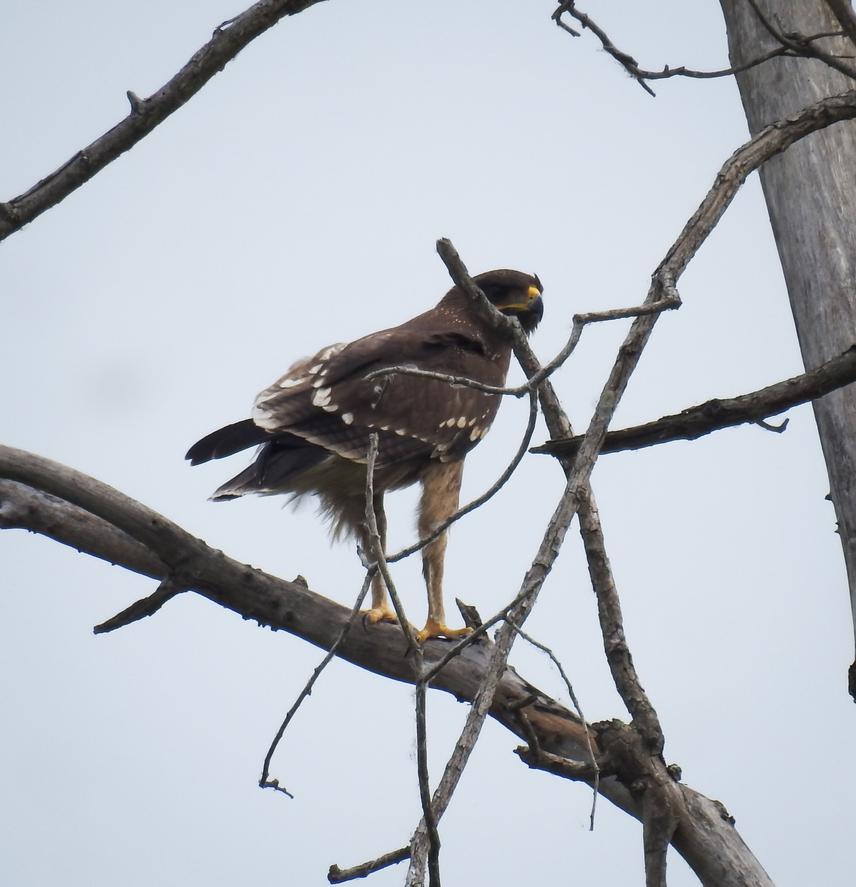Sandesh Gurung
Other projects
Small population size and declining trends, the Indian Spotted Eagle (Clanga hastata) is a globally as well as nationally Vulnerable species (IUCN 2017, Inskipp et al. 2016). The species is one of the least known of all raptors because it is recently recognized as different species which is separated from the European Lesser Spotted Eagle (Clanga pomarina) based on mitochondrial DNA sequences (Parry et al. 2002). Furthermore little information exists to understand the declining causes which hinder the scientific knowledge. Thus, project is designed to acquire information on breeding biology, habitat and threats through the study of eagle’s breeding territories. Results of this study is expected to have an important contribution on better understand its breeding biology, habitat, causes of population decline and also to minimize the threats to species. Involvement of local people in community sensitization programme will bring positive attitude towards the conservation of species at local level.

Fledged Indian Spotted Eagle of Koshi, Nest E. ©Hari Basnet.
Small population size and declining trends, the Indian Spotted Eagle (Clanga hastata) is a globally as well as nationally Vulnerable species (IUCN 2017, Inskipp et al. 2016). The species is one of the least known of all raptors because it is recently recognized as different species which is separated from the European Lesser Spotted Eagle (Clanga pomarina) based on mitochondrial DNA sequences (Parry et al. 2002).
Detailed information regarding the breeding ecology of this species is lacking. The failure in the breeding attempts because of ecological and anthropogenic factors that include disturbance and pesticide use could be a reason behind the decline. Therefore, it is utmost to have a detail study to develop conservation actions and management strategies for the long run survival of this least known species.
After the accomplishment of project “Wintering raptor survey in lowlands of Nepal” conducted by Himalayan Nature in 2016, we revisited the area for intensive survey of ISEA where we were able to record five active nests but till now no any specific research has been conducted. Therefore, the project will mainly focus on following objectives:
• Breeding biology and diet composition to eaglets
• Nest predators, anthropogenic disturbances on breeding success and developing effective conservation measures
• Qualifying an inventory of threats
• Conservation and awareness program
This study will reveal the breeding ecology of the species including nest site characteristics, nest building effort of male and female, duration of incubation by each individuals, territorial behavior of adults, nestling period, presence/absence of siblicide, effort frequency made by adult to feed eaglets, eaglet’s diet, nest predators, mortality and post-fledgling dependency. Determination of types, level and distance of human disturbances in the nesting site will help to develop safe buffer zone during breeding season. Observation from the camouflage hide, a blind place, 40m away from the active nest will help to obtain precise data without being noticed by eagles. Furthermore, this study will help to acquire information about the types and amount of pesticides used and different aspects of human-eagle conflict.
Training programs will be provided to the farmers highlighting the eagle importance as a biological controller of pests, harmful effects of pesticides, procedure for their safer and controlled use. This will discourage them to over use of pesticides thereby reducing the secondary poisoning cases. Various conservation awareness programs will certainly help to create awareness among local community members.